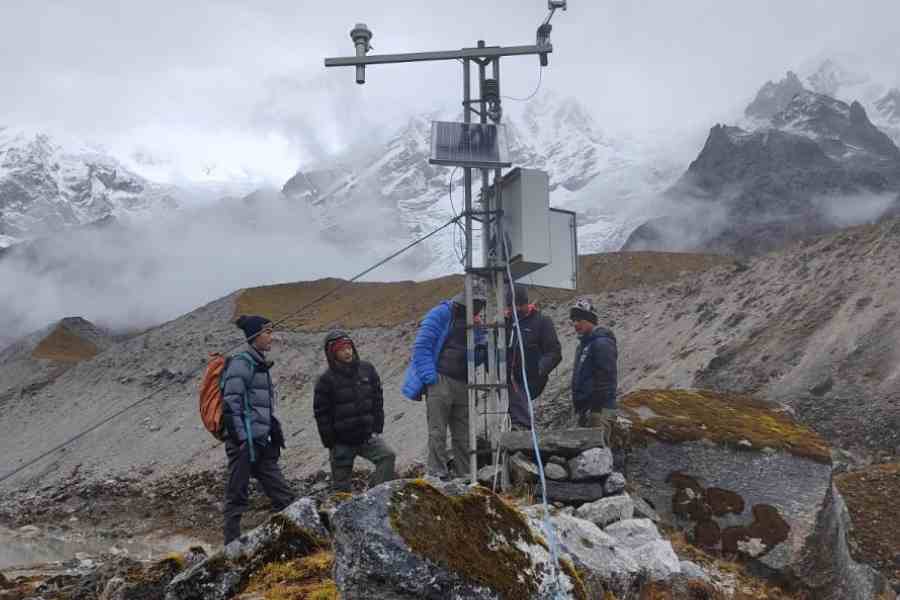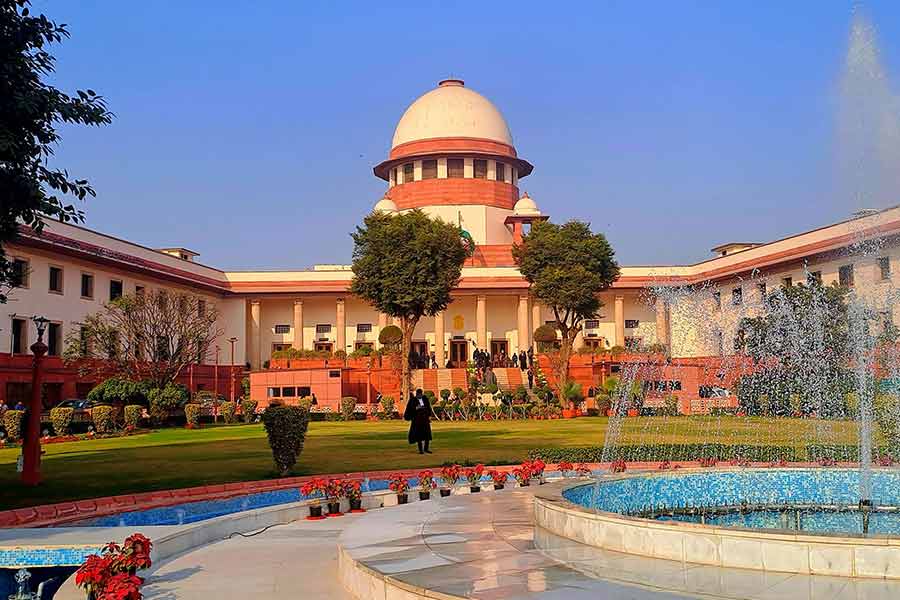Sikkim has completed a survey of its 320 glacial lakes as part of the first exercise in the country to mitigate glacial lake outburst floods or GLOFs, state government sources have told The Telegraph.
Sikkim and parts of the Darjeeling hills were devastated after the South Lhonak lake burst on October 3-4 night last year, the flash floods killing over 100 people, destroying hundreds of houses and sweeping away a 1,200MW hydel project.
“Of the 320 lakes, 16 have been found vulnerable (at this point of time),” a Sikkim government source said.
The state authorities are now conducting a “comprehensive test” on these 16 vulnerable lakes in collaboration with the National Disaster Management Authority and the Swiss Agency for Development and Cooperation.
A GLOF is a sudden release of water from a glacial lake that can happen if the dams or barriers containing the lake give way, usually because of an increase in the volume of water.
“The comprehensive tests have been completed on nine of these vulnerable lakes,” the source said.
These tests include measuring the depth of a lake — deeper lakes carry more water and are therefore more vulnerable to bursting their banks and causing floods —studying the subsurface geology of the lake and the stability of the surrounding terrain.
All the 320 glacial lakes are situated at altitudes above 16,000 feet while human settlements in Sikkim are mostly confined to altitudes of around 6,500 feet, that is, almost 3km below the lakes.
“These lakes are big, with some carrying around 100 million cubic metres of water. Given the 3km drop from their locations to the nearest habitations, GLOFs can be devastating, as was seen last year,” the source said.
Once the tests on all the 16 vulnerable lakes are completed, the authorities will explore ways to reduce the lakes’ water levels.
“Different lakes have different characteristics,” the source said, emphasising that specific plans will have to be developed for each vulnerable lake.
The options the teams are exploring to reduce the lakes’ water volumes include siphoning, pumping and creating a channel — using natural channels, if available, or even tunnelling through the rock if the lake structure is strong.
Sources said the possibility of building check dams on the valleys below, as a second line of defence, was also being explored.
A check dam is a small, often temporary, dam. Built at a spot on a valley where the floodwaters from any or all of a cluster of glacial lakes can converge on their way down, a check dam “can slow down the discharge of water to the low-lying areas”, the official said.
After finalising the plans, experts will conduct computer simulations to assess the threat from GLOFs and the efficacy of the prototype safety measures.
“The entire process is challenging as such measures are being taken in the country for the first time,” a source said.
It has taken three expeditions this year to survey the 320 glacial lakes.
During the last expedition, from October 19 to November 5, monitoring stations and pressure probes were installed at the South Lhonak and Shako Chu lakes. Last year’s GLOF had washed away the previous station at the South Lhonak.
The unmanned monitoring stations are equipped to measure precipitation, temperature and windspeeds, and have cameras to capture the changes the lakes undergo.











